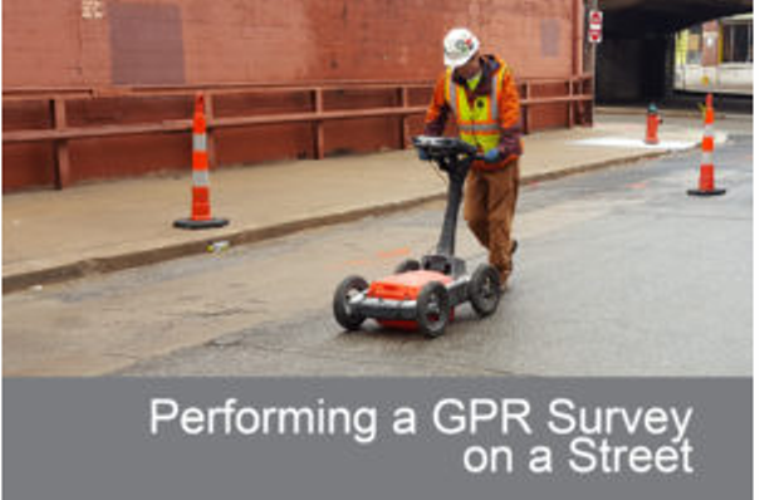The Future Perspective of Subsurface Exploration: Innovations in Ground Penetrating Radar Technology

With the rising need for efficient and effective site investigation techniques grows, Ground Penetrating Radar (GPR) technology is emerging as a leading solution in multiple industries. GPR surveys deliver essential insights into subsurface conditions, helping professionals identify and map underground utilities, geological structures, and other concealed elements. This advanced technology enhances project planning and execution, ultimately contributing to more cost-efficient and safer construction and engineering practices.
In the ever-evolving landscape of infrastructure and environmental assessments, understanding the significance of GPR surveys is vital. These non-invasive surveys not only enhance the investigation process but also minimize risks associated with undiscovered subsurface conditions. By capitalizing on GPR technology, construction teams, environmental consultants, and archaeologists can reveal key information, paving the way for better decision-making and favorable project outcomes. As we examine the future of GPR technology, it is crucial to explore its applications, benefits, and the advancements that will shape its function in site investigations moving forward.
Comprehending Ground Penetrating Radar Investigations and Their Significance
Ground Penetrating Radar (GPR) investigations are a crucial instrument in diverse sectors, enabling professionals to see subsurface elements without disruption. Through sending high-frequency radio waves through the ground, GPR can identify changes in substance makeup and locate objects beneath the surface. This non-destructive approach offers substantial benefits for locating underground utilities, geological features, and including historical sites, establishing it as an indispensable instrument for civil engineers, archaeologists, and environmentalists together.
The value of GPR assessments cannot be overstated, particularly when it comes to ensuring safety and budget effectiveness in building initiatives. They facilitate the detection of risks such as subsurface utilities, voids, or construction irregularities prior to excavation. By obtaining accurate information about the underground environment at an early stage in the planning stages, GPR aids mitigate risks, reduces the potential for costly delays, and in the end leads to greater efficiency task execution.
In addition, GPR surveys serve a crucial role in decision-making procedures in multiple fields. In the field of civil engineering, for example, they assist shape the selection of sites and development approaches by providing essential understanding into ground conditions. In GPR Survey Worcestershire , GPR assists in preserving historical resources while still enables necessary progress. As advancements continues to advance, the role of GPR surveys in these industries will expand, strengthening their importance in contemporary investigations.
Applications and Benefits of GPR Technology

Ground Penetrating Radar (GPR) technology has a broad spectrum of applications throughout different industries, making it an invaluable tool for identifying underground structures and features. In building and infrastructure, GPR surveys play a vital role in finding utilities, such as hydraulic, fuel, and electricity lines, which helps prevent accidents and financially draining repairs during excavation. Moreover, GPR is used to detect voids, internal anomalies, and other hidden concerns before construction commences, ensuring projects move forward efficiently and safely.
In archaeology, GPR has changed the way scientists discover historical sites and artifacts without having to disturbing the ground. This non-invasive method allows archaeologists to document below-ground features and locate potential site sites with remarkable accuracy. Similarly, in environmental investigations, GPR assists in locating pollutants and analyzing groundwater flow, aiding in the assessment and remediation of tainted areas. The flexibility of GPR technology makes it a multifaceted tool in varied fields.
The monetary benefits of using GPR surveys are substantial. By identifying https://dokuwiki.stream/wiki/Mapping_the_Invisible_How_GPR_Investigations_Are_Changing_the_Field_of_Archaeology , GPR helps cut down on time and money on construction sites, minimizing delays and unforeseen costs. The precision of GPR technology lessens the risk of damaging existing utilities, thereby preventing expensive repairs and service disruptions. As GPR technology keeps to evolve, its applications will grow, providing even greater efficiency and cost-effectiveness for projects in different sectors.
GPR Surveys: Expenses, Accuracy, and Upcoming Trends
Pricing considerations for GPR surveys often depend on various factors such as the dimensions of the project, location, and the intricacy of the survey required. Generally, GPR surveys can be more cost-effective than traditional methods when considering the potential for eliminating excavation, minimizing project delays, and cutting down on costly mistakes during construction. It is crucial for clients to understand the parameters of their project to receive correct estimates and determine the return on investment that GPR surveys can provide.
Accuracy is one of the key features of GPR technology, offering considerable improvements over traditional surveying techniques in locating beneath-ground utilities and structural irregularities. GPR surveys can reach varying depths and provide detailed images, which can lead to more well-informed decision-making in construction and engineering projects. However, the accuracy of results can also depend on factors such as soil composition, moisture content, and the availability of other underground structures. As the technology continues to progress, improved algorithms and enhanced signal processing techniques are expected to boost accuracy levels further.
Gazing into the future, GPR surveys are poised to play a pivotal role in advancing construction engineering and infrastructure inspection. As technology innovations unfold, including the integration of GPR with artificial intelligence and machine learning, we can foresee superior interpretation of data and increased automation in surveys. This not only simplifies the process but also introduces new applications, potentially transforming how we approach geotechnical investigation. The ongoing progress in GPR technology signify a hopeful future, ensuring that it remains a crucial tool in the fields of infrastructure, archaeological research, and ecological studies.
